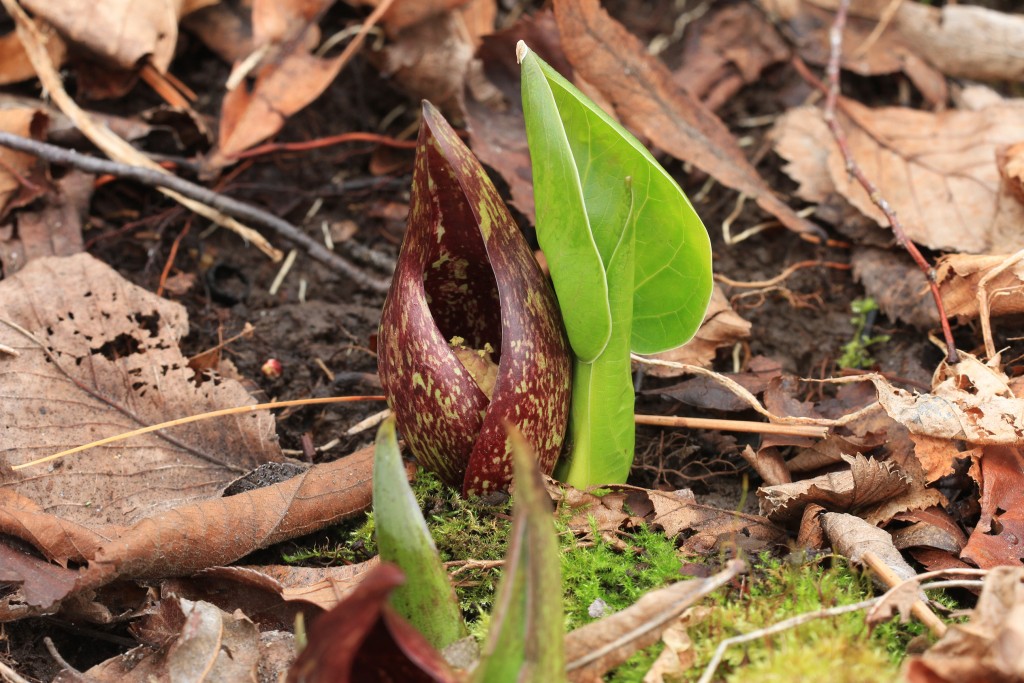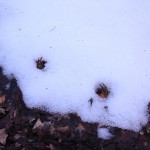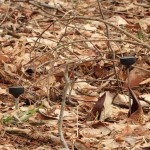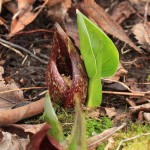Skunk Cabbage, Symplocarpus foetidus is usually the first wildflower I look for each year. It can bloom in February or March, depending on the year’s weather and snow pack. I have been telling people for years that Skunk Cabbage generates heat to melt through the snow and bloom early, often while the ground in the wood is still under a considerable amount of snow. In the late winter of 2015 I decided to try and document this phenomenon for myself. By using a laser thermometer I took readings on several different days and various times, with no real temperature variation from the plants to surrounding soil. Since that didn’t seem to work I decided to try again, this time using digital stick thermometers that could be pushed into the soil and inserted into the hood or spathe. This made a huge difference in the findings. While the plants were actually past blooming and the peak heat producing period and with only a few still at the end of flowering, I was still able to get some interesting readings and confirm what I had been teaching along.
At this stage I found a difference of 10 to 13 degrees Fahrenheit from the inside of the hood to soil 10 inches away. These temperatures were still close to and slightly above the air temperature but warmer than the soil. The exception was one plant growing in water, which had a difference of only 6 degrees. Had I taken these readings at the height of blooming, there would have been a much broader difference as found by a study done by Biologist Roger Knutson. The plant generates heat to keep the inside temperature of the hood up to as much as 60 degrees warmer than the surround air temperature. These temperatures are maintained for around two weeks during blooming. The spadix has no starch of its own but it uses starch stored in the large fibrous roots to generate the heat through respiration. Knutson also found that when severed from the roots, the temperature of the spadix immediately begins to drop.
So while I was too late for the local plant to see the real impressive ability of this thermogenic plant for this year, I will continue to check temperatures in the future. It may not be too late for the northern plants for this year.
Start looking for spring bloomers. I saw a report of Hepatica blooming in the Waterloo State Recreation Area and today the American Hazel is blooming in my yard.
- Skunk Cabbage Melting Snow
- Skunk Cabbage With Thermometers
- Skunk Cabbage
 Click on the title of a post to view a full gallery of images.
Click on the title of a post to view a full gallery of images.




